Premium Only Content

Diary Of A Madman Crazy Train Ozzy Osbourne
Diary Of A Madman Album: Diary of a Madman (1981)
Crazy Train Album: Blizzard of Ozz (1980)
by Ozzy Osbourne
Ozzy's bass player Bob Daisley wrote Diary Of A Madman. Said Daisley: "I really wrote that one about myself. When I was 16 I had my first nervous breakdown and it really f---ed me up. I was a sensitive kid and I have always been a sensitive person. I suppose you have to be sensitive being in the arts. I wrote the words about myself. Quite often we have problems and we are our own worst enemies and that is why 'Enemies fill up the pages one by one in the diary. Are they me?' I am my own worst enemy.
The other thing was that Randy [Rhoads] had the rough idea for the song 'Diary of a Madman' and I came up with title. I wrote all of the lyrics as well on the album. Ozzy would come and go from rehearsals. One day he came in and we played him 'Diary of a Madman' and because it had funny timing he couldn't get his head around. He said, 'Who the f--k do you think I am? Frank Zappa!' We said, 'You sing in this part but you don't sing here. This timing goes like this etc.' He started to like it when he got his head around but at first he was like, 'This is not for me'."
The title came from a 1963 movie of the same name starring Vincent Price.
Through a bit of revisionist history, Diary of a Madman became Ozzy Osbourne's second solo album. After leaving Black Sabbath in 1978, he formed a new band with Bob Daisley, Randy Rhoads and Lee Kerslake called the Blizzard of Ozz, which ended up being billed as an Ozzy solo project after the album was released showing just Osbourne on the cover and his name in big letters.
In an interview with Bob Daisley, he explained that this song was conceived before they had the title for the album, and it made a perfect fit. Said Daisley: "I thought it would be a good title for an Ozzy Osbourne album because he's got the reputation of being one of the madmen of rock and roll."
The little boy on the album cover is Ozzy's son Louis from his first marriage.
In Crazy Train, Ozzy asks when we can all learn to love in a world gone mad. Ozzy wrote the song with guitarist Randy Rhoads and bass player Bob Daisley. In an interview with Daisley, he explained how it came together:
"Randy had the basic riff, the signature riff. Then we worked on music together. He needed something to solo on so I came up with a chord pattern and the section for him to solo over.
Before it was called 'Crazy Train,' before we even had a title, Randy and I were working on the music. He had his effects pedals, and coming through his amp was a weird kind of chugging sound. It was a phase-y kind of psychedelic effect, this chugging sound that was coming through his amp from his effects pedal.
Randy was into trains - he used to collect model trains and so did I. I've always been a train buff and so was Randy. So I said, 'Randy, that sounds like a train. But it sounds nuts.' And I said, 'A crazy train.'
Well, that's when the title first was born. And then Ozzy was singing melodies and he was phrasing exactly how it ended up. And I started writing lyrics to it."
While many believe that Crazy Train is yet another Ozzy song about insanity, it's actually about the Cold War. Evidence in the lyrics: "Millions of people living as foes," "One person conditioned to rule and control; The media sells it and you live the role," "Heirs of a cold war, that's what we've become. Inheriting troubles I'm mentally numb." The relevant acronym was "M.A.D." (Mutually Assured Destruction), a doctrine which basically amounts to "if they shoot their nukes at us, we'll shoot ours right back, and that would be the end of the world that nobody wants, so it won't happen... as long as we keep pointing nukes at each other." Hence, "crazy" is another word for "mad."
The M.A.D. logic actually extends from "Nash equilibrium," a concept of zero-sum strategy first theorized by game theory mathematician John Nash. You'll remember him as a character from the 2001 film A Beautiful Mind. The acronym M.A.D. was formulated by computer science pioneer John von Neumann, who had a taste for satirical humor. In fact, this concept, and the "Doomsday Device" idea behind it (coined by war strategist Herman Kahn), forms the entire basis for Stanley Kubrick's 1964 film Dr. Strangelove or: How I Learned to Stop Worrying and Love the Bomb. The real-life version of the device is the "Dead Hand" control system deployed by the Soviets. Cold-War paranoia extended from the 1950s until the famous end to it in 1991. By the way, the actual term "Cold War" was coined by one George Orwell, in his essay "You and the Atomic Bomb."
Randy Rhoads was Ozzy's guitarist on Crazy Train - he was in Quiet Riot before joining Osbourne. Like most of the guitar solos he recorded with Ozzy, Rhoads had to "double" all his guitar parts. This means he had to play every note of this very difficult solo exactly the same way, twice. This is one reason why the solo on the recording sounds so unique.
Rhoads was a very proficient and influential guitar player, and the first guitarist to seek Ozzy's input during the songwriting process. "He was the first guy to go, 'Maybe you should do it in this key,'" Ozzy said. "He was a first guy to ever consider my opinion and give me a break."
This was the first single Ozzy Osbourne released after leaving Black Sabbath in 1978. He left the band after a particularly heated dispute with guitarist Tony Iommi, at which time Ozzy was painted as a substance-abusing layabout by his former bandmates. "Crazy Train" was a triumph for Ozzy in that he proved that he could succeed outside of the Sabbath shelter, albeit with lots and lots and lots of help.
Osbourne got his riffs from Randy Rhoads and his lyrics from Bob Daisley on Blizzard of Ozz, which was formed as a band, not a solo effort. The trio wrote the songs together, later adding drummer Lee Kerslake to complete the band. Their label, Jet Records [owned by Don (Sharon Osbourne's daddy) Arden], Ozzy's future father-in-law, made the project look like a solo effort by putting Ozzy alone on the album cover and his name in big letters on top of the words "Blizzard of Ozz." The "Crazy Train" single had the band name in large print with Ozzy's name above it. This was as close as they would get to being billed as a band on their releases, even though promotional photos and reviews from the time show that Blizzard of Ozz was supposed to be the band name.
This appropriation was a sticking point for Rhoads, Daisley and Kerslake, but they stayed with Ozzy for his next album, Diary of a Madman, which when issued in 1981 was not just listed as an Ozzy solo album, but listed Rudy Sarzo and Tommy Aldridge on bass and drums instead of Daisley and Kerslake. Legal entanglement followed, and Rhoads died in 1982. Funny how that happens. Don Arden, Sharon's daddy, huh? In the end, Osbourne's post-Sabbath output was disproportionately attributed to Ozzy, and "Crazy Train" is generally considered his first solo single.
The 1987 live double-album Tribute contains a version of this which is a tribute to Randy Rhoads. Rhoads played on Ozzy's first two solo albums before he died in a plane crash while the band was touring in Florida in 1982. He was 25.
The sound at the end of Crazy Train is a studio engineer saying "An Egg" through an oscillator. Ozzy had asked him what he had for breakfast that morning.
In America, "Crazy Train" bubbled under on the Hot 100, spending one week at #106. It's influence is far greater than its chart showing, as it became one of Ozzy's signature songs and helped the Blizzard of Ozz album sell over one million copies in the US over the next two years. It eventually would sell over 3 million in the US and launch Ozzy toward media domination in America, where with the help of his wife, Sharon, he would start a successful festival (Ozzfest) and get his own reality show on MTV. Not bad for a British Heavy Metal singer.
In 1999, Crazy Train was used in Mitsubishi car commercials. In 2012, it was used in a commercial for the Honda Pilot.
This was covered by Pat Boone, former gospel singer and Ozzy's old neighbor, for the album In a Metal Mood. His cover used a whistle and backup singers cooing "Choo, choo" as he sang it in a lazy, Las Vegas style.
A similar cover recorded by Lewis Lamedica was used as the theme song for MTV's smash hit reality show The Osbournes; Boone's version was included on The Osbourne Family Album with a recording of Jack describing what a great neighbor Pat was. According to Jack, he dealt with everything you see on the show and more - logs flying through the window, constant yelling from the next house, etc.- and never complained once. Pictures exist showing Ozzy at Pat's house, in his garden, by his pool, etc.
The instrumental of Crazy Train song provided the beat to the Trick Daddy w/ Twista & Lil Jon track "Let's Go," which made #7 US in 2004. It was also interpolated on the Hollywood Undead song "Undead," which made #104 in 2009.
In The Office episode "The Seminar" (2011), Kevin plays Crazy Train before his speech at Andy's small-business seminar. It was also used on The Simpsons in the 2015 episode "Paths Of Glory" and in the 2015 movie Magic Mike XXL.
Ozzy Osbourne released an animated music video in September 2020 as part of the 40th anniversary celebration of Blizzard Of Ozz. The clip features hand-drawn cartoon versions of the Prince of Darkness and his band. Following Randy Rhoads' guitar solo, the guitarist floats up to heaven as his bandmates look on.
The rattle in the intro was produced by a vibraslap, a rather strange contraption consisting of a wooden ball and a box of metal teeth, connected by a u-shaped wire. The instrument provided a quirky component to several other songs, ranging from Jimi Hendrix' "All Along The Watchtower" to Cake's "Short Skirt/Long Jacket."
Black Lagoon (2006)
A team of pirate mercenaries known as the Lagoon Company smuggles goods in and around the seas of Southeast Asia in the early to mid 1990s. The Lagoon Company consists of four members: Dutch, the leader; Revy, the main gunfighter; Benny, the mechanic, computer specialist, and researcher; and Rock, an ex-salaryman hijacked by the team and abandoned by his department chief, eventually becoming their negotiator and "professional" face of the group, retaining his old job skills.
Their base of operations is located in the fictional harbor city of Roanapur in east Thailand near the border of Cambodia (somewhere in the Mueang Trat district, likely on the mainland north/northeast of the Ko Chang island or on the island itself). The city is home to the Chinese triad, the Russian Bratva, the Colombian cartel, the Italian mafia, a wide assortment of pickpockets, thugs, mercenaries, thieves, prostitutes, assassins, and gunmen. The city also has a large Vietnamese refugee population following the Vietnamese refugees exodus after the communist takeover of Vietnam in 1975.
Lagoon Company transports goods for various clients in the American made 80-foot (24 m) Elco-type PT boat, Black Lagoon. It has a particularly friendly relationship with the Russian crime syndicate Hotel Moscow. The team takes on a variety of missions—which may involve violent firefights, hand-to-hand combat, and nautical battles—in various Southeast Asian locations, even going as far as Isabela, Basilan in the Philippines. When they are not working, the members of the Lagoon Company spend much of their down time at The Yellow Flag, a bar in Roanapur which is often destroyed in firefights.
Hiroe stated that he has been influenced by writers James Ellroy, whom he called his favorite novelist, and Stephen King, stating that he learned how to create the atmosphere of Black Lagoon based on his works. Hiroe also called Mikiya Mochizuki [ja]'s manga series Wild 7 "almost like the DNA of that sort of action genre," and mentioned influence from Akihiro Ito (Geobreeders author) and Kenichi Sonoda (Gunsmith Cats author). Apart from manga, Hiroe stated that, from a "purely graphic point of view", he was influenced by the Franco-Belgian comic series Soda, and commented that he liked the atmosphere and storytelling of Blacksad by Spanish authors Juan Díaz Canales and Juanjo Guarnido.
Hiroe is particularly influenced by films, mentioning influence from directors John Woo, Quentin Tarantino, Robert Rodriguez, and by the 1990s Hollywood films and triad Hong Kong films from the 1980s and 1990s. Hiroe mentioned that Pulp Fiction and other films from Tarantino inspired him to balance the action and comedy in Black Lagoon.
Hiroe said that although the series is much influenced by American works, he was not worried about the references being lost on the Japanese readers, stating that it can be sensed when the American culture is coming from a Japanese person, so "there's a style in it that can be sensed by Japanese readers," adding that, conversely, if people in America read it, there is "more potential for awkwardness and weird parts."
-
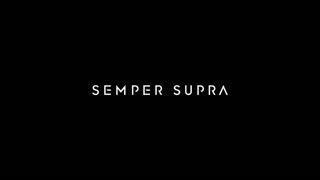 11:56
11:56
Psychological operations
4 days agoThe Mississippi Squirrel Revival Shriners Convention Ray Stevens
582 -
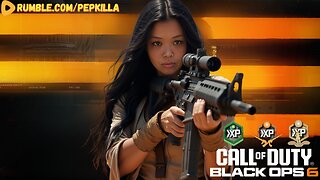 LIVE
LIVE
Pepkilla
8 hours agoDouble XP Zombies and Warzone ~
1,803 watching -
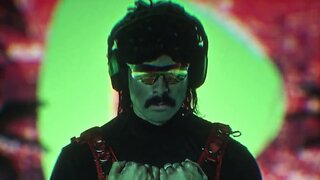 0:46
0:46
Dr Disrespect
2 days agoIt's not just a stream... it's an experience
501K2.82K -
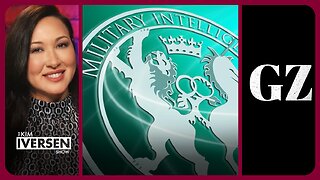 1:28:27
1:28:27
Kim Iversen
1 day agoBOMBSHELL: Secret British Military Plot to Prolong the Ukraine War And Take Down The Grayzone
93.5K89 -
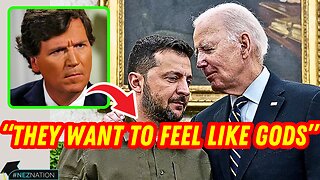 11:54
11:54
Professor Nez
6 hours ago🚨CHILLING REVELATION: Tucker Carlson Reveals Dems NEXT PLAN to STOP Trump!
84K27 -
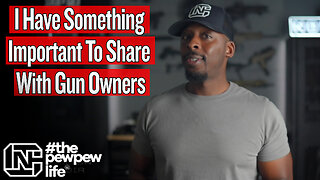 6:51
6:51
Colion Noir
6 hours agoI have Something To Say To Gun Owners
51.3K16 -
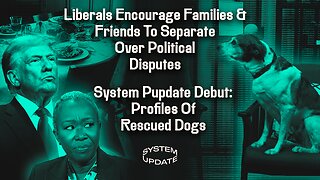 1:18:24
1:18:24
Glenn Greenwald
10 hours agoLiberals Encourage Family & Friends To Separate Over Political Disputes; Segment Debut Of System Pupdate: Profiles Of Rescued Dogs | SYSTEM UPDATE #373
110K182 -
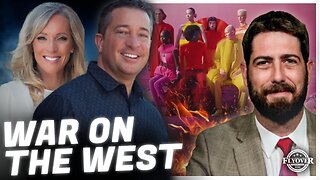 1:24:53
1:24:53
Flyover Conservatives
1 day agoMarketing Madness or Manipulation? The War on Western Identity - Alex Newman; Economic Update - Dr. Kirk Elliott | FOC Show
44.1K5 -
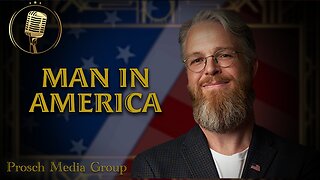 1:15:05
1:15:05
PMG
1 day ago $7.67 earned"Big Pharma EXPOSED: The HIDDEN Cures They Tried to Bury"
36.5K7 -
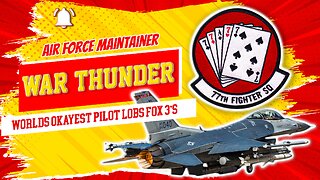 3:26:12
3:26:12
Tundra Gaming Live
7 hours ago $2.40 earnedThe Worlds Okayest War Thunder Stream
31.9K1